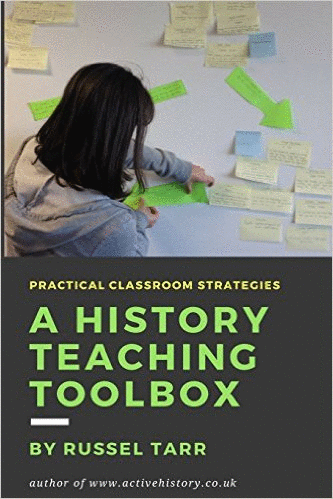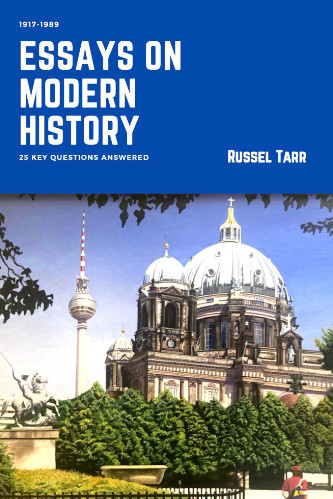An interactive study unit and virtual Head2Head interview from ActiveHistory.
This detailed, stand-alone study unit is based around an interactive Head2Head Virtual Interview with Winston Churchill.
The unit is designed to be used with Year 9 students (13-14 years) but is easily adaptable to other contexts.
The unit develops sourcework and essay-writing skills, and the outcome is a detailed, structured essay answering the key question "Was Winston Churchill a hero, or a villain?".
- Winston Churchill is a fascinating and complex historical figure who divides opinion more than perhaps any other person in 20th Century History.
- To his admirers was a radical social reformer and an inspiring visionary who warned against the appeasement of European dictators and saved Britain and Western democracy from what he called a 'new Dark Age' of Nazi tyranny.
- To his detractors he was a warmongering, blundering reactionary responsible for such things as the disaster at Gallipoli in World War One, the callous treatment of exploited workers in the General Strike and a failed attempt to spark off World War Three against Soviet Russia in his 'Iron Curtain' speech.
- The truth, of course, is that Churchill was all of these things and much more besides. The challenge for historians when deciding if Churchill deserves to be remembered as a 'hero' or a 'villain' depends on the criteria we choose to use, the evidence we select, and the interpretations we then place on it.
The purpose of this unit is to provide a "Study Through Time" which will cover the Boer War, the Liberal government between 1906-1914, World War One, the Interwar Period, World War Two, the Cold War and the foundation of the Welfare State. A completely new "Head2Head" interactive interview forms the backbone of this new unit .
Introductory Lesson and Activity - Teacher Lesson Plan
This introductory lesson gets students to pull apart what it means to be a 'hero' or a 'villain'. Students brainstorm what they know about Churchill and will probably lean more towards a 'hero' interpretation. But then the teacher provides a twist in the tail for the second half of the lesson that should get them thinking....!
Photographs of Churchill: What deductions about him can we draw?
"What impression is created of Churchill in each of the following photographs? Record your thoughts to the right of each picture. Compare your ideas with a partner, then with the class. TIP: To help you analyse each picture, you might want to consider such things as: What has just happened? What is he doing? What's his mood and why? What is he thinking? What will happen next?"
Diamond9 Activity: Photographs of Churchill
"Cut out and create a "Diamond 9" Diagram of these images, with the most 'positive' images towards the top, and the most 'negative' towards the bottom. Explain your choices either in a paragraph or by putting clear captions next to each of the images themselves. TIP: Start by writing your captions next to each of the following pictures. Then cut them out, rearrange them as you see fit, and stick them down as a display piece".
Quotes by Churchill
From a consideration of visual sources students now move towards quotes by Churchill. Winston Churchill was well-known for his speeches and his quotes. In this activity we will look at a number of these quotes, and work out whether on balance they suggest that he was a hero or a villain.
"Read through the following quotes by Winston Churchill (your teacher may wish to divide them between the class, with each student taking several each). What does each quote suggest about the sort of man Churchill is and what he believes in? Put your choice of word(s) in the appropriate column(s). Discuss with a partner / as a class. Reduce the list down to your favourite 10 quotes. Aim to have a balanced number of positive and negative quotes".
Primary sources about Churchill - Silent Discussion
Prior to the lesson, your teacher will print off sets of sources and place them on different tables. The class will be divided into pairs, and each pair will be directed to a different table with a different set of sources. "Read the sources in silence, then still in silence, annotate the source by underlining key words / phrases and either (a) Making your observations, or (b) Asking questions, in the margin (your partner can answer these questions if they wish - otherwise the teacher may do so later). During this time, the teacher will move between the groups silently adding extra questions / observations and answering any questions raised..."
OR
Primary sources about Churchill - worksheet version
An alternative version of the above exercise, more suitable as a homework / distance learning activity.
Head2Head Interview - Teacher led activity to determine if Churchill was prejudiced
The teacher now defines the key words in each of these questions, and then 'interviews' Churchill about each one. Students record the findings in terms of negative / positive responses.
Were you racist?
Were you sexist?
Were you antisemitic?
Were you islamophobic?
Were you homophobic?
Head2Head Preparation: Identifying 'Heroic' and 'Villainous' qualities and framing the questions ready for the interview
The class will be divided into two teams. The first team needs to make a list of 'heroic' (positive) qualities. The second team needs to make a list of 'villainous' (negative) qualities. These are then matched up in pairs, prioritised in terms of importance, and then transformed into questions ready to ask in the interview with Churchill.
Head2Head Interview!
" You will now be directed to the Virtual "Head2Head Interview" with Churchill. Starting with the first row of words in your table, ask Churchill questions to test whether he was a hero or a villain (e.g. "Were you brave?", "Were you cowardly?"). Record his response(s) in the right hand column of the row. Before moving on to the next question, highlight things he said that suggest he was a 'hero' in green. Highlight things he said that suggest he was a 'villain' in red. Finally, give Churchill a 'hero score' out of 100% and record this in the final column of the row".
Independent Research Phase and Mark Scheme for the Essay
"The main body of your essay is now completed. To distinguish your study, you should now take the time to conduct some extra research to develop each of your main paragraphs with fresh evidence. Make use too of this mark scheme..."

© 1998-2025 Russel Tarr, ActiveHistory.co.uk Limited (Reg. 6111680)
1 Torrin Drive, Shrewsbury, Shropshire, SY3 6AW, England
Privacy Policy | Contact






